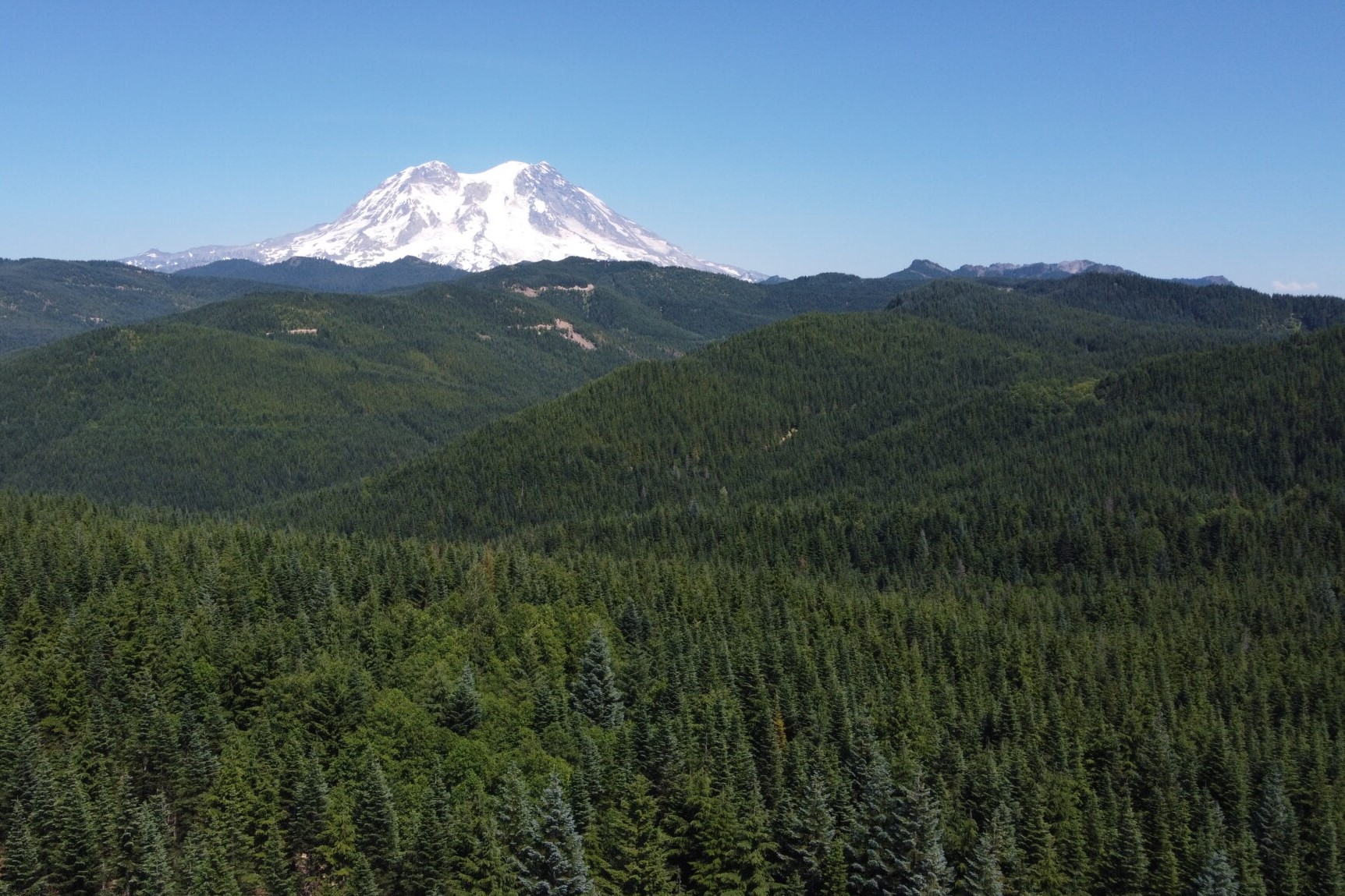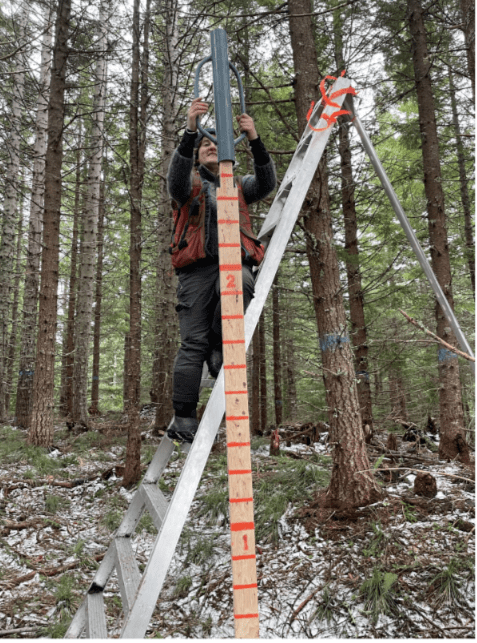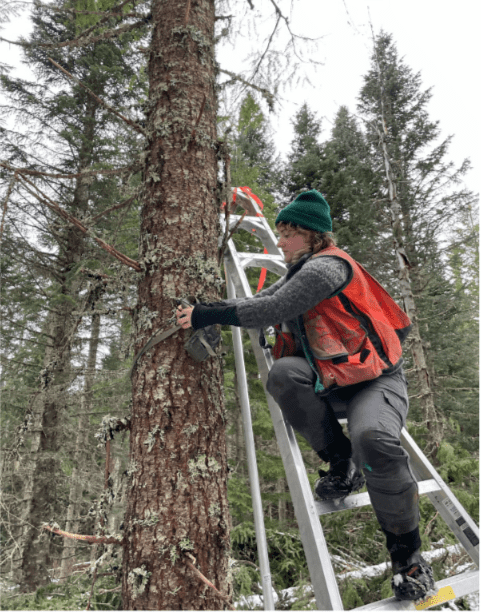Keeping a Weather Eye Open: Measuring Snowfall in the Nisqually Watershed

Maintaining a steady and reliable source of water in a changing climate is critical for the health of both people and ecosystems. Northwest Natural Resource Group (NNRG) has been testing methods of ecological forestry that will increase the resilience of future watershed forests.
At the Nisqually Community Forest near Mount Rainier, we have implemented several forestry techniques
that you may recall from our previous article:
- Thinning the forest to spread available soil moisture among fewer trees,
- Installing snow gaps so that more snow accumulates and extends snowmelt season
- Planting seedlings from warmer zones to provide a local source for adapted genetic traits
The techniques were used on formerly industrial forests, and are part of our overall plan to restore the forest while also making it more resilient to the predicted future climate in the area. https://www.youtube.com/watch?v=yhoBsx5NyVQ
If you’re interested in seeing this project in action, take a look at our recent video, ‘A Little Thinning Goes a Long Way’.
In the gaps we cut last year, we have been measuring snow accumulation to gauge whether the forestry techniques used there have been effective. Staff use trail cameras programmed to take a picture a day and aimed at 3-meter stadia rods to show the depth of the snowpack. They also walk transects, using avalanche probes to measure the depth of the snow. They have been walking those transects every two weeks while the snow is accumulating, and will walk them every week while it is melting (the “ablation season”).
Data collection is still ongoing, but so far the results match our prediction that snow accumulates in thinned areas and gaps more quickly. These forestry techniques should gradually reduce the risk of tree mortality, improve the forest habitat, and supply snowmelt to headwater streams later into the spring.
An update with the first season of snow monitoring results can be found here.


NNRG Forest Technician Nora Halbert installs a camera and a stadia rod to measure the accumulation and ablation of snow. Photo courtesy of Jaal Mann/NNRG.
This spring, we will be planting these snow gaps and thinned areas with seedlings sourced from warmer areas. As we were considering where we should source these seedlings, we used the seedlot selection tool, looking ahead to the trees’ maturation years of years 2041-2070 under a RCP 4.5 climate trajectory. The latter number refers to a scenario of moderate future greenhouse gas emissions that would lead to 2-3°C of warming (as opposed to the ‘worst case scenario’ of RCP 8.5).
Given the abundant natural re-seeding we expect from volunteer silver fir, noble fir, and western hemlock from uncut areas adjacent to the forest gaps, we intend to plant at about 350 trees per acre and focus on Douglas-fir and Western redcedar. As our canopy gaps cover about 16 acres in total, that means we will plant 5,550 seedlings. To explore the survival and vigor of local and ‘imported’ seedlings, we will split plantings evenly between local and externally sourced seed stock. We also plan to plant 600 western white pine seedlings and a few hundred western hemlock from lower elevations, to gauge how well they do compared with local seed stock.
As we have discussed previously in the Treeline Network, the assisted migration of species is an evolving and sometimes controversial topic. Experts are right to point out the risks of more intensive forms of assisted migration. Others note that the risks of inaction may be greater, as the warmer and drier climate of the future threatens our local ecosystems. The Forest Adaptation Network (FAN) has been discussing how to develop professional best practices for assisted migration in our area and will share ideas through the network as they arise.
NNRG is a partner of Treeline, a group of restoration practitioners, nurseries, and researchers whose aim is to disseminate and discuss climate adaptation strategies across the Northwest. Peruse Treeline’s April 2022 newsletter to read more stories about projects that combat climate-related threats to forests.

Leave a Reply